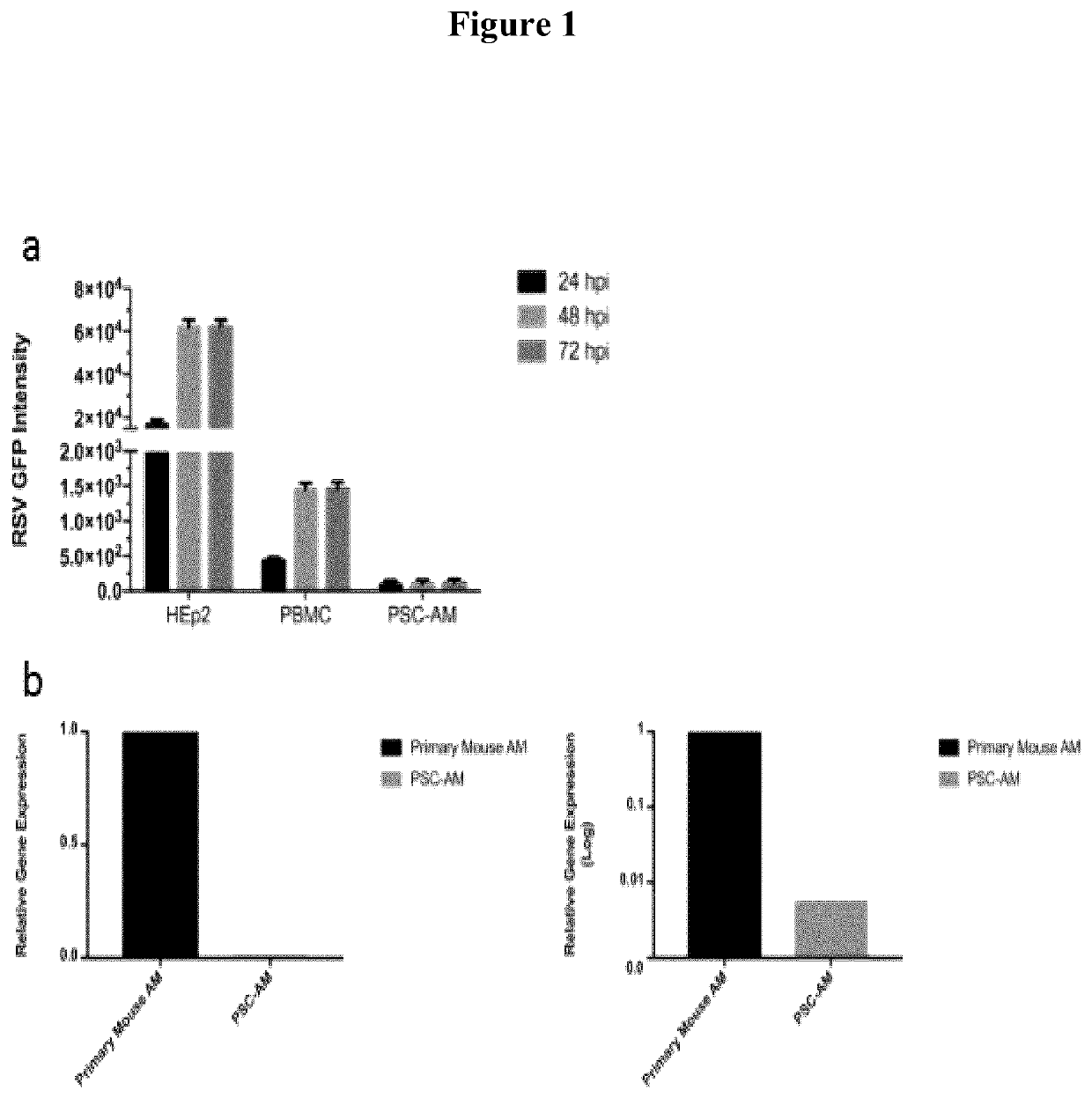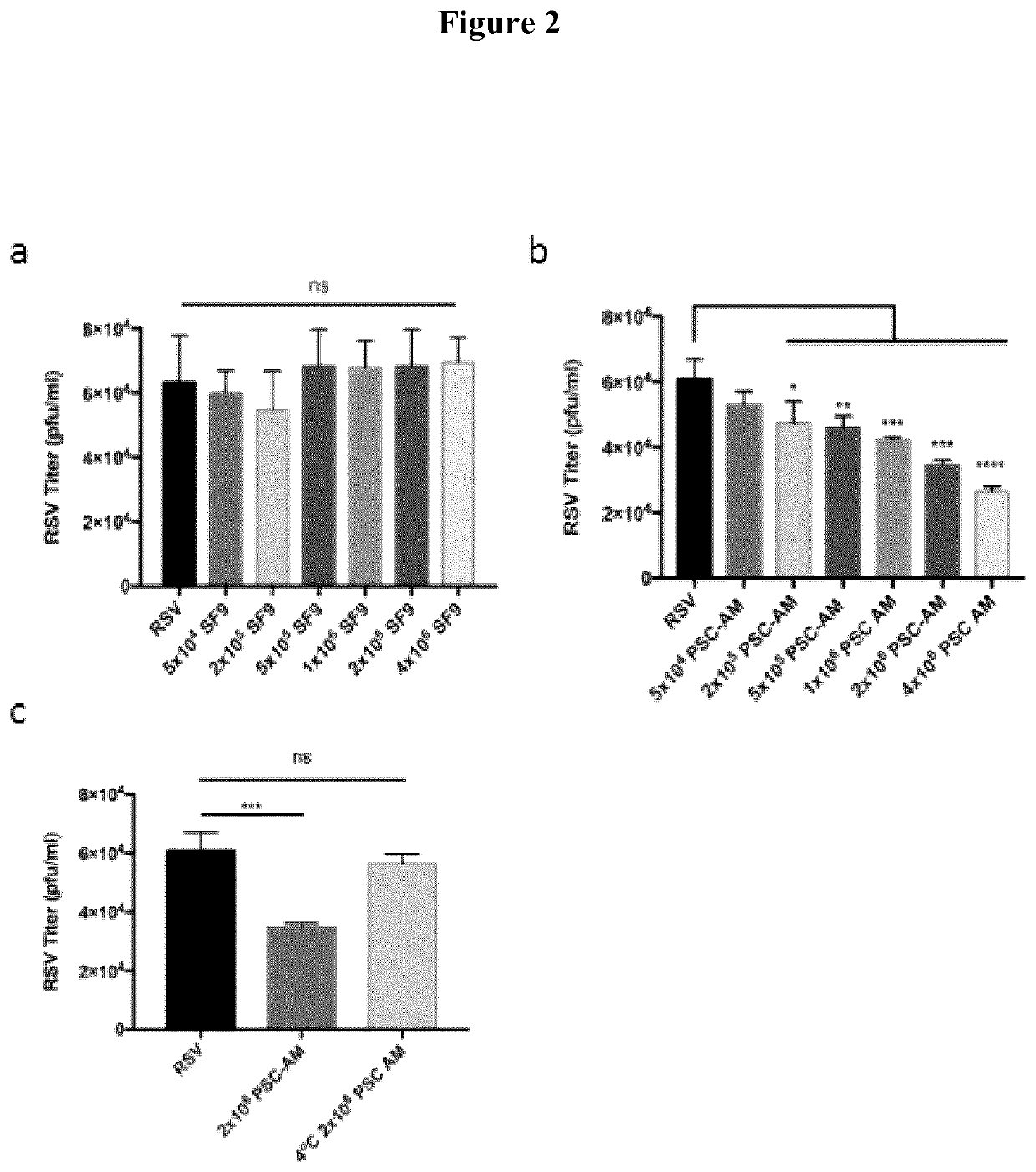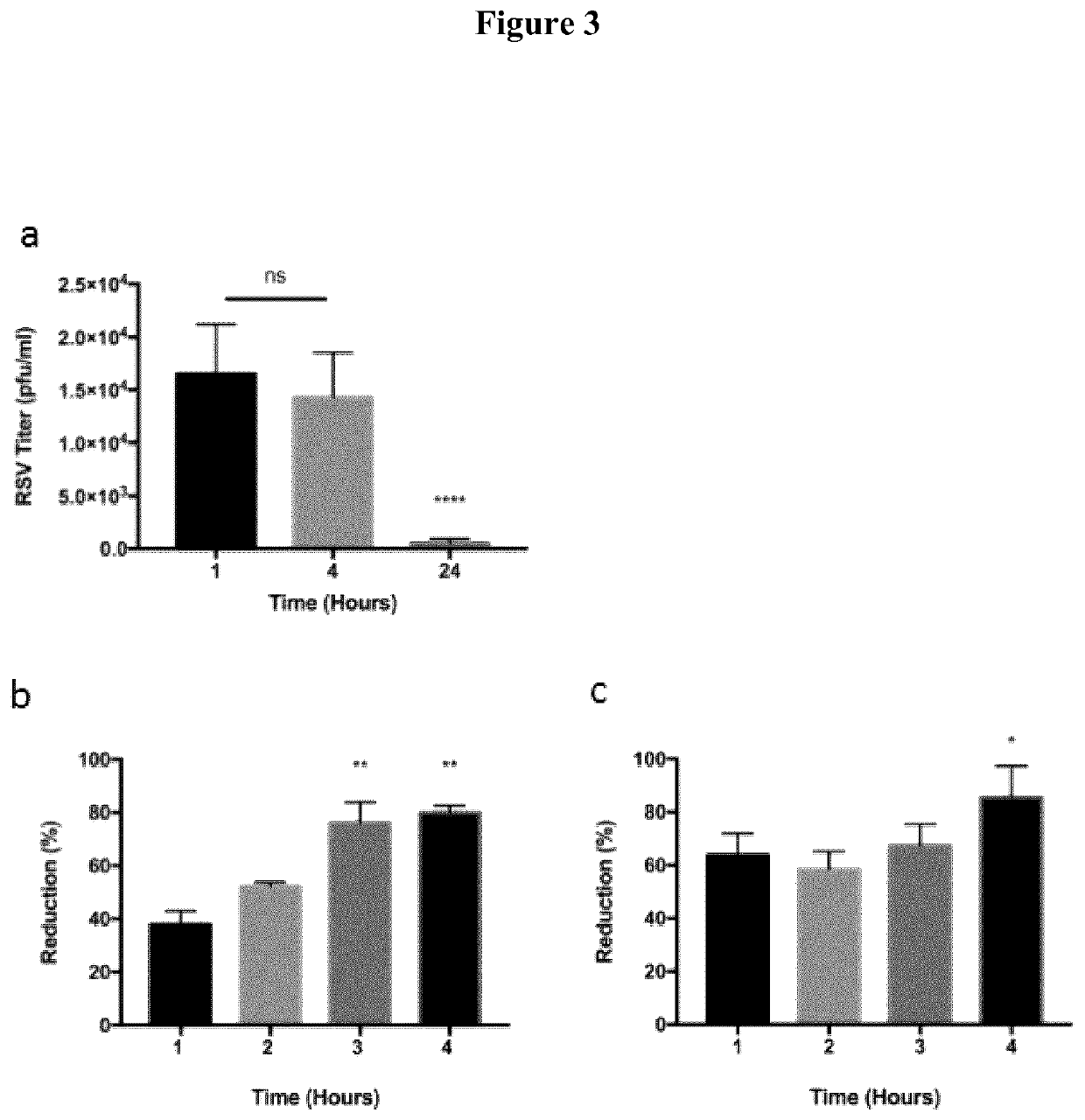Method of Treating Respiratory Tract Infection
a technology for respiratory tract infections and treatment methods, applied in the field of respiratory tract viral infections, can solve the problems of no vaccine or specific anti-viral treatment for respiratory tract infections, morbidity and mortality in elderly and immunocompromised populations,
- Summary
- Abstract
- Description
- Claims
- Application Information
AI Technical Summary
Benefits of technology
Problems solved by technology
Method used
Image
Examples
example 1
stant to RSV
[0027]Methods and Materials: HEp-2 cells were obtained from ATCC and maintained in EMEM supplemented with 10% fetal bovine serum (FBS), 2 mM L-glutamine and penicillin-streptomycin solution. Sf9 cells (Invitrogen) were maintained at 27° C. in Grace's supplemented media (Invitrogen) containing 10% heat-inactivated FBS. PSC-AM cells were kindly provided by Michael Litvack and the Post Lab and were prepared and maintained as described by Litvack et al. (American Journal of Respiratory and Critical Care Medicine 193, 1219-1229 (2016)), the contents of which are incorporated herein by reference. The cells were grown in a humidified environment at 37° C. and 5% CO2. Recombinant RSV strains expressing GFP (RSV-GFP) were kindly provided by Dr. M. Peeples. RSV was produced in HEp-2 cells as previously described (Tayyari F, Marchant D, Moraes T J, Duan W, Mastrangelo P, Hegele R G. Identification of a nucleolin as a cellular receptor for human respiratory syncytial virus. Nature M...
example 2
ide Prophylaxis Protection Against RSV In Vivo
[0038]The potential for ALM cell therapy was investigated in an in vivo model of infection as summarized in FIG. 6(a). Briefly, Balb / c mice were intra-trachaelly instilled with 1×106 ALMs or NIH3T3 cells two days prior to RSV infection. Body weights were measured for the two days following instillation and showed no significant differences (FIG. 6(b)). Mice were then given an intranasal inoculation of RSV-A2 two days after instillation of ALMs or NIH3T3 (at Day 0), and body weights were measured daily until Day 4.
[0039]Body weights measured following RSV inoculation showed a trend of weight loss peaking at day 3 in the untreated groups. ALM-instilled mice exhibit reduced body weight loss. For example, peak weight loss was about 2.69 g in RSV mice and only about 0.72 g in ALM treated mice as shown in FIG. 6 (c).
[0040]On Day 4, mice were euthanized and lungs were harvested for plaque assay or inflated and fixed for histological assessment....
PUM
 Login to View More
Login to View More Abstract
Description
Claims
Application Information
 Login to View More
Login to View More - R&D
- Intellectual Property
- Life Sciences
- Materials
- Tech Scout
- Unparalleled Data Quality
- Higher Quality Content
- 60% Fewer Hallucinations
Browse by: Latest US Patents, China's latest patents, Technical Efficacy Thesaurus, Application Domain, Technology Topic, Popular Technical Reports.
© 2025 PatSnap. All rights reserved.Legal|Privacy policy|Modern Slavery Act Transparency Statement|Sitemap|About US| Contact US: help@patsnap.com



